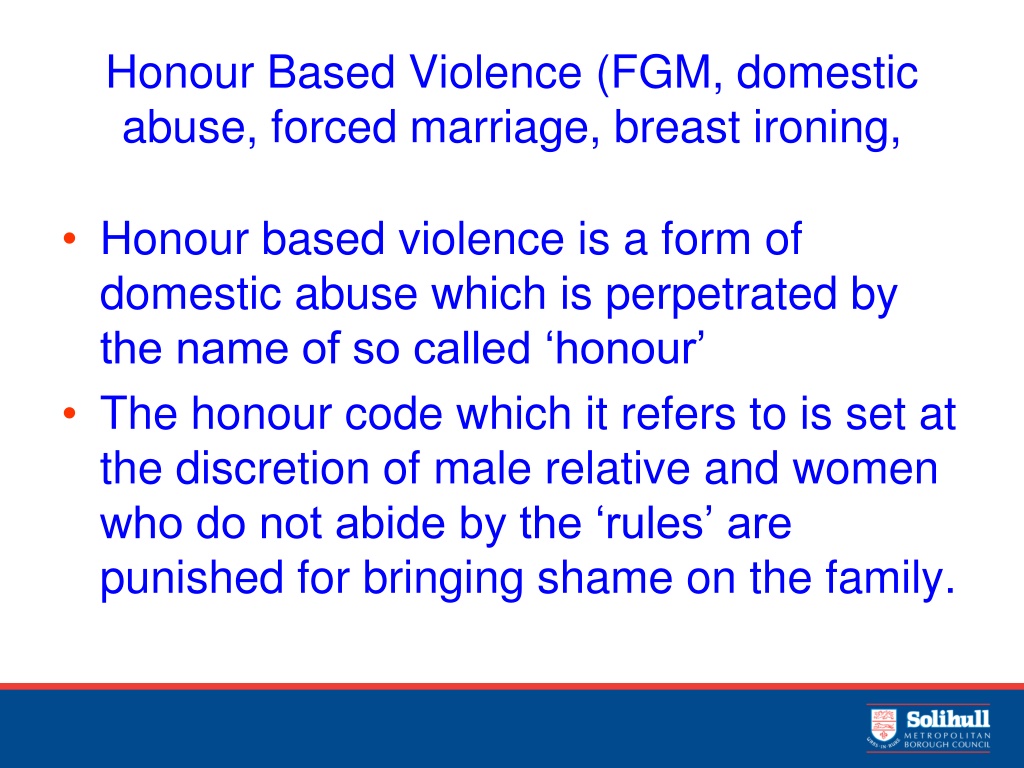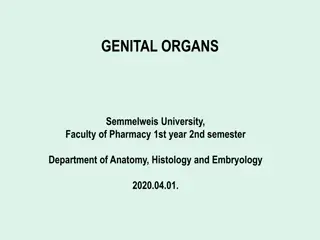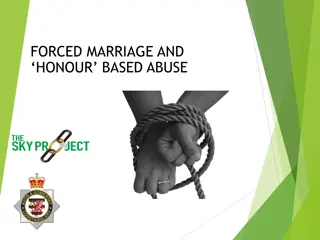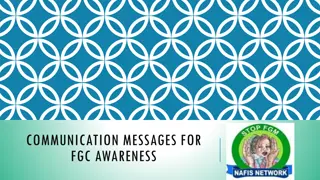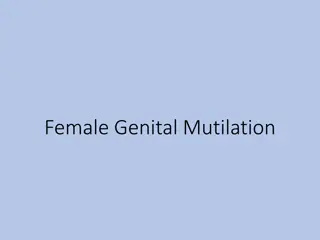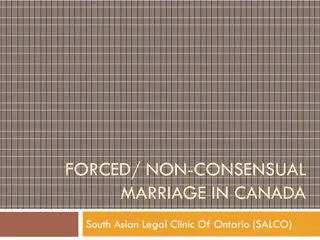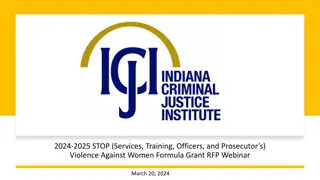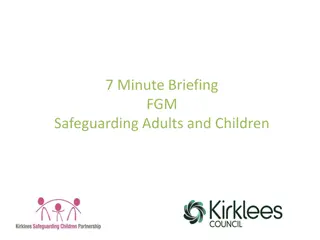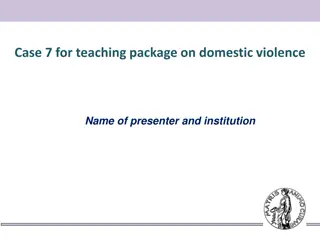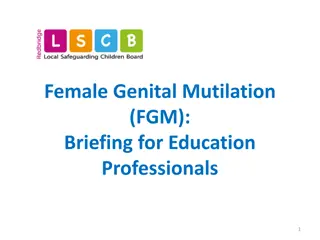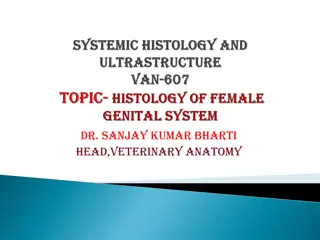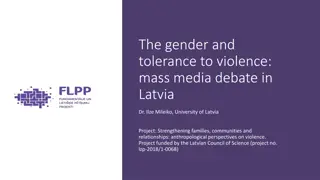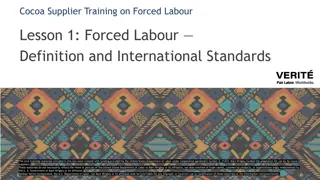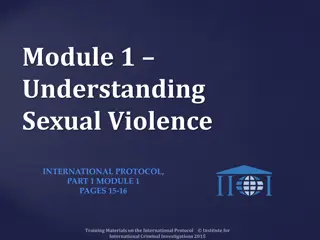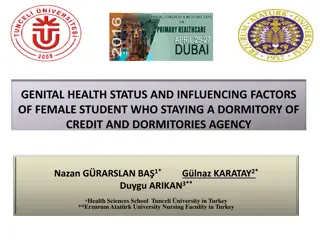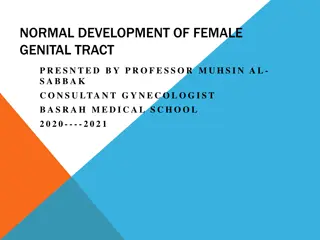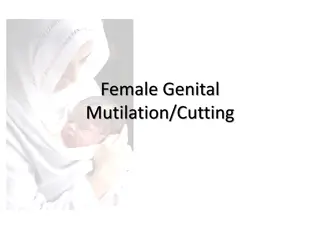Understanding Honour-Based Violence: Forced Marriage and Female Genital Mutilation
Honour-based violence, including forced marriage and female genital mutilation, is a form of domestic abuse perpetuated in the name of family honour. Forced marriage involves one or both parties being coerced into a marriage without their consent, while female genital mutilation poses a significant risk to young girls. The practice of forced marriage is not endorsed by any religion and is a harmful form of abuse. Countries like Pakistan, Bangladesh, and India have reported high rates of forced marriages. It is essential to raise awareness and prevent these harmful practices.
Download Presentation

Please find below an Image/Link to download the presentation.
The content on the website is provided AS IS for your information and personal use only. It may not be sold, licensed, or shared on other websites without obtaining consent from the author. Download presentation by click this link. If you encounter any issues during the download, it is possible that the publisher has removed the file from their server.
E N D
Presentation Transcript
Honour Based Violence (FGM, domestic abuse, forced marriage, breast ironing, Honour based violence is a form of domestic abuse which is perpetrated by the name of so called honour The honour code which it refers to is set at the discretion of male relative and women who do not abide by the rules are punished for bringing shame on the family.
What is Forced Marriage A marriage in which one or both parties do not (or in the case of some adults with a learning disability cannot) consent to the marriage Duress is often involved and can include physical, psychological, financial, sexual and emotional pressure
Difference between arranged and forced marriage An arranged marriage is one where parents or other relatives are normally involved in the choice of potential spouse, but both individuals CAN SAY NO to the suitors they are presented with. Government has no concerns regarding this practice, however if a person decides against the arranged marriage but then has no choice, this becomes a force marriage and is unacceptable.
Why do Forced Marriages Happen? Controlling unwanted behaviour Providing a carer for a disabled family member Assisting claims for UK residency and citizenship
No religion endorses forced marriage, similarly, forced marriage is a form of abuse abuse is not part of any culture, where the victim s family are Christian, Muslin, Sikh, Hindu or Jewish. No religious texts promote this harmful practice.
Forced Marriage Countries (2015) Pakistan (44%) Bangladesh (7%) India (6%) Afghanistan (2%) Somalia (3%) Turkey (1%), Iraq (1%), Sri Lanka (1%), Sudan (1%) 14% of cases were domestic with no overseas element
Female Genital Mutilation 9 pupils identified as at risk of or having experience FGM: Unity 3, Mosaic 2, Evolve 4, Rural, Synergy, Post 16, Independent all 0 Draft FGM risk assessment
Supervision What is supervision? Practicalities Individual cases Confidentiality Tactics
Supervision Supervision is an accountable process which support, assures and develops knowledge, skills and values of an individual, group or team; undertaken by suitably trained professionals. The problem solving cycle
Key functions Management oversight and accountability Continuing professional development Multi-agency working Voice of the child Personal support
Roles and responsibilities (supervisor & supervisee) Supervision Methods Frequency Agreement Preparation Agenda Location/environment Recording
Designated Safeguarding Lead Toolkit Safeguarding website: www.solgrid.org.uk/safeguarding/ Model policy guidance (safeguarding, child protection, supervision, attendance, safer recruitment, managing allegations etc.) Designated Safeguarding Lead Handbook LSCB thresholds document LSCB procedures
PLENARY Do you now have an increased understanding of local and national safeguarding issues and KCSIE 2016? Do you feel confident to provide an annual update (at least) to all staff at your education provision? Do you feel equipped to use key safeguarding tools (namely DVRIM and CSE screening tools)?
